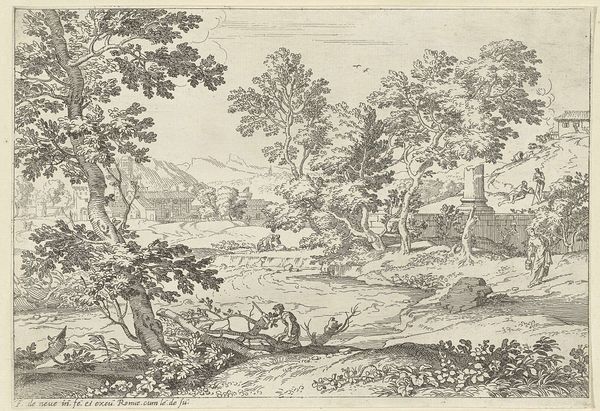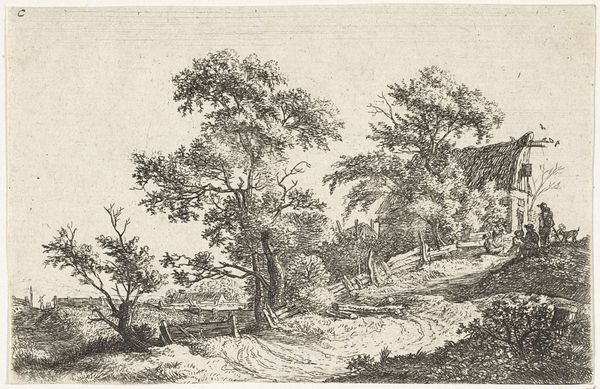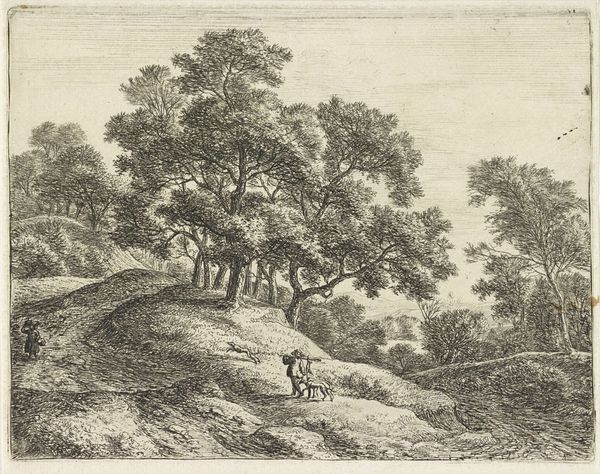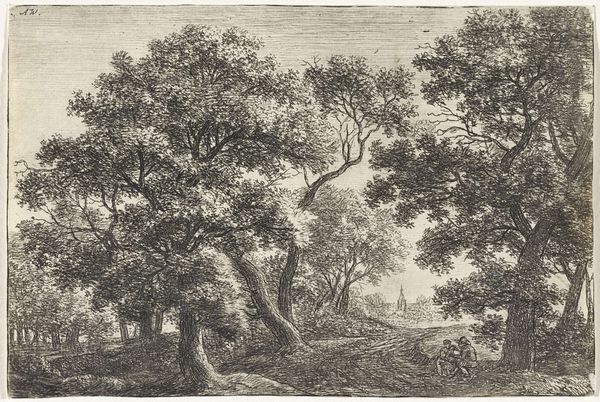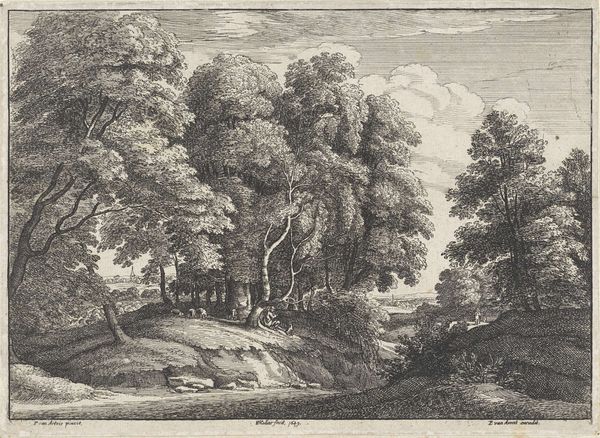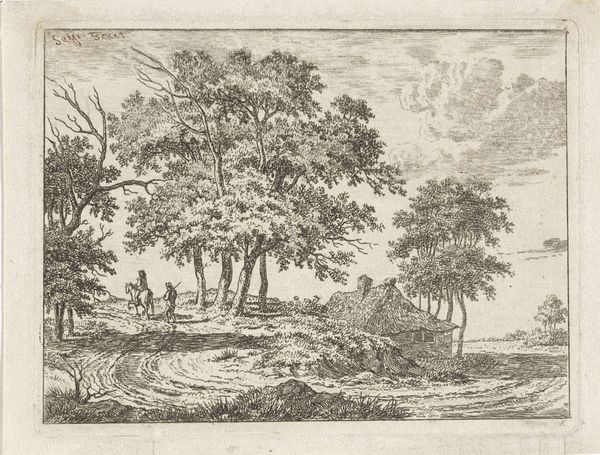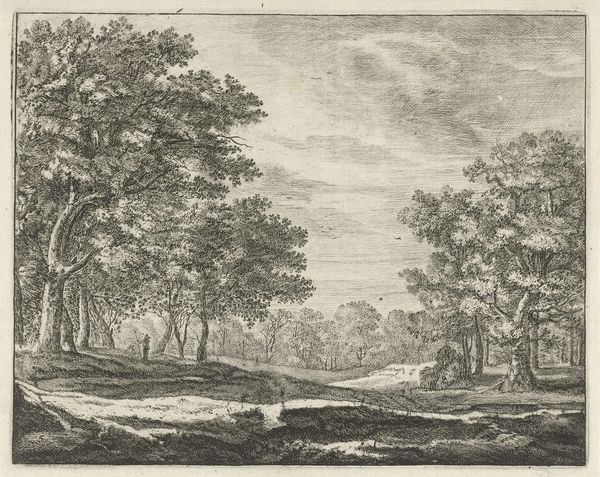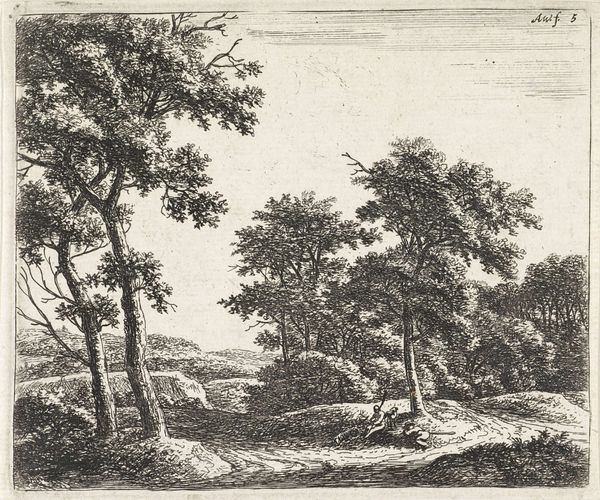
drawing, print, etching
#
drawing
# print
#
etching
#
landscape
#
romanticism
#
line
#
realism
Dimensions: height 125 mm, width 162 mm
Copyright: Rijks Museum: Open Domain
Adrianus Serné created this landscape etching, titled "Heuvelachtig landschap", which translates to "Hilly Landscape," sometime between the late 18th and mid-19th century. Serné lived through the Batavian Republic and the Napoleonic Kingdom of Holland. These were times of political upheaval, as the Dutch Republic was replaced by French rule, followed by the establishment of the Kingdom of the Netherlands. In this context, landscapes can become charged with meanings related to national identity and cultural heritage. The image is of a common man, with his dog, on a path, in a wood. He seems to be minding his own business. The Dutch countryside, with its working folk, becomes symbolic of something deeper, a cultural heritage of independence and self-determination rooted in the land. Serné’s etching suggests a deep connection to the land and a desire to preserve and celebrate the Dutch landscape in a time of cultural and political change. It is an expression of identity intertwined with the love and labor for one’s country.
Comments
No comments
Be the first to comment and join the conversation on the ultimate creative platform.


